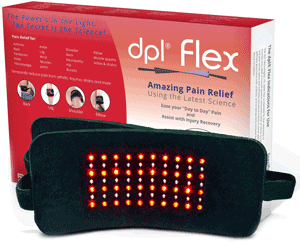Indoor tanning offers you a number of advantages over outdoor and spray tanning.
It’s private, the strength and temperature of the bed’s rays are controlled by professionals, and you’re always assured of getting the right kind of UV exposure you need in order to build your tan.
However, there are also a few disadvantages and side effects, and one of the most distressing is tanning bed rash.
This type of rash can appear suddenly and without any warning and can also be difficult to treat.
There are a number of reasons that cause this rash, but before you try and treat its symptoms on your own, there are seven things that you should know about it so that you can get back to worry-free, safe indoor tanning.
Table of Contents
- 1 1. Skin Dryness and Overexposure Can Cause Tanning Bed Rash
- 2 2. Unsanitary Conditions Are a Common Cause
- 3 3. The Rash Does Not Appear Instantly
- 4 4. You Can Identify the Rash by Its Appearance
- 5 5. You Should Stop Tanning Immediately
- 6 6. Treatment is often Simple
- 7 7. Rashes May Indicate UV Sensitivity
- 8 How to Prevent Tanning Bed Rash
- 9 No One Wants to Get a Tanning Bed Rash
1. Skin Dryness and Overexposure Can Cause Tanning Bed Rash
There are a number of factors that can cause tanning bed rash, but this rash, which mostly appears on the backs of the legs, the back, the stomach, and the chest, is caused by two main things: dry and skin and overexposure to the UV rays the bed gives off.
These rays may give you a tan, but they can also dry out the skin, which causes itching and rashes that are mild to moderate, depending on your skin’s sensitivity.
In general, those who have never tanned before are more prone to developing these rashes because aren’t aware of how sensitive their skin is.
Tanning too long or setting the bed’s controls too high can also cause your skin to break out in a rash.
This occurs because your skin can’t absorb the quantity of UV light that the bed is giving off, and what it cannot absorb irritates the skin, which causes the rash.
To avoid this, it’s important that you only use these beds at a professional salon and under the guidance of tanning professionals.
2. Unsanitary Conditions Are a Common Cause
Tanning bed rash can also be caused by inferior cleaning practices at the tanning salon.
Many people tan in the nude, and as they sweat, their perspiration drips down onto the surface on the bed.
If the beds aren’t cleaned properly and you lie down in this dried sweat, it could irritate your skin and cause you to break out in a rash.
While these types of rashes aren’t as common as those that caused by dry skin and UV overexposure, they show up typically on the back, shoulders, and the backs of the legs, where the skin comes in contact with the surface of the tanning bed.
If you tan indoors, make sure that your salon follows strict disinfecting guidelines to reduce the risk of this rash.
3. The Rash Does Not Appear Instantly
Rashes that develop from the use of a tanning bed do not appear instantly.
In fact, it may take several days before you notice the symptoms.
The rash can break out slowly, over a course of days, growing from a few itchy bumps to a wide, red band that’s irritated and itchy.
This is why tanning bed rash can be difficult to identify: many people shrug it off as prickly heat or bug bites and continue to tan, which can increase the symptoms of the rash.
4. You Can Identify the Rash by Its Appearance
A tanning rash may not always be easy to identify, but if you know what to look for, you can seek treatment sooner.
This kind of rash is different from the small, white bumps of a mosquito bite or the tiny, irregular bumps of prickly heat.
Instead, this rash presents as a series of itchy red blisters.
Depending on their cause, they can even appear on the neck and the face, so it’s important that you’re able to identify them when they crop up.
However, only your dermatologist can properly diagnose and treat this rash.
5. You Should Stop Tanning Immediately
When you discover a tanning rash anywhere on your body, you should stop tanning until you’re seen by a dermatologist for treatment.
Continued tanning will only increase the rash’s redness and irritation, which may lead you to scratch and spread the itch.
While you may be anxious to continue your tanning sessions and build your tan, the rash may only become worse with continued sessions and eventually become infected.
6. Treatment is often Simple
Even if you are diagnosed with this kind of rash, the good news is that they are usually easy to treat.
Other than discontinuing your tanning sessions, your doctor will most likely give you a topical cream that will soothe the itching so that the rash doesn’t spread due to scratching.
Antibiotic creams may be prescribed to stop the inflammation.
There are also several other things you can do at home to speed up the healing process, such as avoiding further exposure to sunlight, taking tepid or cool showers, and using a non-greasy and fragrance-free moisturizer to ease the dryness.
Keep in mind that any type of moisturizer you use should be approved by your doctor.
7. Rashes May Indicate UV Sensitivity
Even if your tanning rash fades quickly, it may return as soon as you start tanning again.
If this happens, your skin is likely sensitive to UV light and you may have to consider other options if you want to get a tan.
Sunless tanning and spray tanning are two popular options for people who are sensitive to UV light, so you should ask your tanning salon representative if these options may be a better choice for you.
Tanning bed rash is a fairly common side effect of using tanning beds, but the symptoms can become quite serious if they are not treated right away.
Being able to identify this kind of rash is an important part of indoor tanning, but if you’re experiencing any kind of rash after tanning for the first time, you should seek treatment right away before you continue your tanning regimen.
How to Prevent Tanning Bed Rash
Now that you know about what tanning bed rash is and how terrible it can be, you obviously want to take steps to prevent it from occurring in the first place. Thankfully, there are several things that you can do to avoid this problem, and a few of them are listed below.
First, make sure you visit a tanning salon that follows strict hygienic methods. Tanning beds should be cleaned thoroughly between patrons, and the environment of the tanning salon on a whole should be sanitary. High quality tanning beds, too, should be in place as well to offer the safest possible tanning experience.
You might even want to pack some cleaning wipes, such as baby wipes, and take those to the tanning salon with you. Wipe down the tanning bed that you are about to use before you get into it. That way, you can take an additional step towards ensuring that the bed is nice and clean, without any residues left behind by the people who used it before you. Even if you are using a high quality salon that is trustworthy when it comes to their level of cleanliness, this is just an additional step that you can take to help prevent tanning bed rash.
Do you like to use tanning lotions or sprays before getting into a tanning salon bed? Have you developed a rash as a result? Then there might be something in those products that is making your skin prone to developing the rash that you were trying to avoid. Perhaps you are allergic, for example, to an ingredient or two in the formulations. If this is the case, try not using those products on your skin when you tan and see if that helps.
To protect your skin from excess exposure to UV rays, apply some sunscreen before getting into the tanning bed. An SPF of 15 might be enough for you to protect your skin against both UVA and UVB rays, and that may help prevent a rash from forming as well. Then, after your tanning session is over, you might want to apply a bit of aloe vera gel or 1% hydrocortisone cream to your skin so that you can cool it and soothe it, as well as help prevent a tanning bed rash from forming.
No One Wants to Get a Tanning Bed Rash
The truth is that no one wants to deal with the irritation and embarrassment that comes with a tanning bed rash. Knowing what causes this skin problem, and what steps you can take to prevent it, will definitely come in handy.
Remember, if you do develop a tanning bed rash, there are treatments available, but no matter what, you should avoid tanning either indoors our outside until your skin has healed, as even getting more exposure to the sun’s rays could make your condition worse. And if you do develop a rash but you aren’t sure how to treat it, don’t hesitate to consult with your doctor for some personalized advice.



I started using the tanning bed. Ive been 4 times and started noticing these little bumps on my belly my breast and back the 3rd time I went. As wondering what cauae this? Didnt start until I started tanning.. Any ideas
I have it too idk what is causing this I did stand up instead of law down I changed lotions please make this itch go away ite on my stomach and back I’m covered in a rash it will go away a lil bit not all the way than when I tan 1 hr later it’s back everywhere nothing helps the itch go away Idk what to do I dont want to stop tanning :((( help….
i have seen on my body that red tanning slowly turning into black spots. what should i do know?
My issue is tanning place has been closed for few months because of pandemic after I’ve been going for few years. Broke out rash on back and side of face. Very itchy. What can I do?